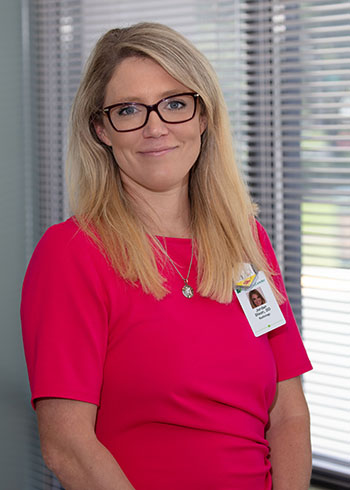Debunking five common misconceptions about mammography
Women's Care
St. Joseph’s/Candler Radiologist Dr. Jordan Dixon addresses radiation exposure, false-positives and other common mammogram myths
We all come up with excuses to do or not do certain things.
I went to the gym today so it’s OK to have this pint of ice cream.
Or, it’s raining outside so I’m going to skip church today.
But one thing you should not make an excuse for is getting your annual mammogram. Don’t let an untruth you’ve heard be the reason you skip this potentially life-saving annual exam.

“I think there are a lot of misconceptions or temporary things like pain or potential fear of getting called back, but those are temporary,” says Dr. Jordan Dixon, a radiologist with St. Joseph’s/Candler. “These days, we have such low-dose radiation technology and get such high-quality images that screening has come a long, long way. It’s all still worth it in the end.”
Here are five common misconceptions surrounding mammography:
Mammography exposes me to dangerous radiation
Dr. Dixon hears this almost daily. She then points to the numbers.
“The risk of dying of breast cancer is very real. One in eight women are diagnosed with breast cancer,” Dr. Dixon says. “Receiving regular annual screening mammograms for average risk women over the age of 40 prevents your risk of dying of breast cancer by 50 percent. Those are very real numbers.”
Also real is the tiniest amount of radiation that a mammogram produces. An average mammogram with two views of each breast is 0.4 millisieverts (mSv) of radiation per breast. That’s about seven weeks of just being a human being, walking around, not exposed to anything out of the ordinary, Dr. Dixon says. In fact, most Americans get about 3 mSv a year.
“Long story short – dying from breast cancer or at least having breast cancer is a very real possibility,” Dr. Dixon says. “The risk of radiation from a mammogram is theoretical and not measurable. So to me, those are not even comparable.”
I only need to be screened every other year
“What would be the point of screening every other year? If present, the cancer is going to continue to grow and you’re going to catch it later when treatment may be more difficult,” Dr. Dixon says.
A common misunderstanding is when and how often you should be screened. At St. Joseph’s/Candler, we follow the recommendation of the American College of Radiology, which recommends annual screening starting at age 40 for average risk women. That’s what has shown to save the most lives, Dr. Dixon says.
Some women may be at higher risk, especially if they have a first-degree relative who had breast cancer at a younger age. Certain ethnicities also are at higher risk of developing this disease. Talk to your OB/GYN or primary care doctor to find out if you are high-risk.
Related Article: Where can I get a mammogram?
It’s too painful
The process of getting a mammogram is quick and should not be painful, Dr. Dixon says. Yes, you may feel a little uncomfortable because the machine uses a moderate amount of compression, but that helps result in high-quality images.
Think of it like going to the dentist, Dr. Dixon says. It may not be the most fun thing to do, but you still go, right?
There are other screening options besides mammography
While there is some truth to this – there is breast MRI and breast ultrasound – those imaging tools aid mammography in diagnosing, but they don’t replace it.
“Mammograms are the only proven modality to save lives from breast cancer,” Dr. Dixons says. “Breast MRI is an amazing tool. I read breast MRIs all the time, but it does not replace a mammogram. You cannot see breast calcifications on a breast MRI like we can see on a mammogram.”
“If you have to get only one test, mammogram is it.”
Related Article: When would I need a breast MRI exam?
I don’t want to deal with the fear of a false-positive
OK, this may be more of a concern than a myth, because false-positives do occur. But let’s look at the positive side of a false-positive. (A false-positive mammogram looks abnormal even though no cancer is actually present.)
There have been numerous studies done on this topic. One such study Dr. Dixon cites showed 63 percent of women say they would rather have a false-positive and not have cancer or catch something potentially early as opposed to not knowing or not getting called back.
“That fear is temporary, solved by a breast biopsy that turns out benign or getting additional imaging that turns out benign, and the fear goes away and you are happy,” Dr. Dixon says. “If it’s a true positive, then we catch your cancer earlier when survivorship is much higher.”
Related Article: What is a breast biopsy?
When it’s time for your annual mammogram, be sure to schedule your appointment. St. Joseph’s/Candler has five imaging locations plus a mobile mammography unit that offer mammograms year round. Find a location near you.